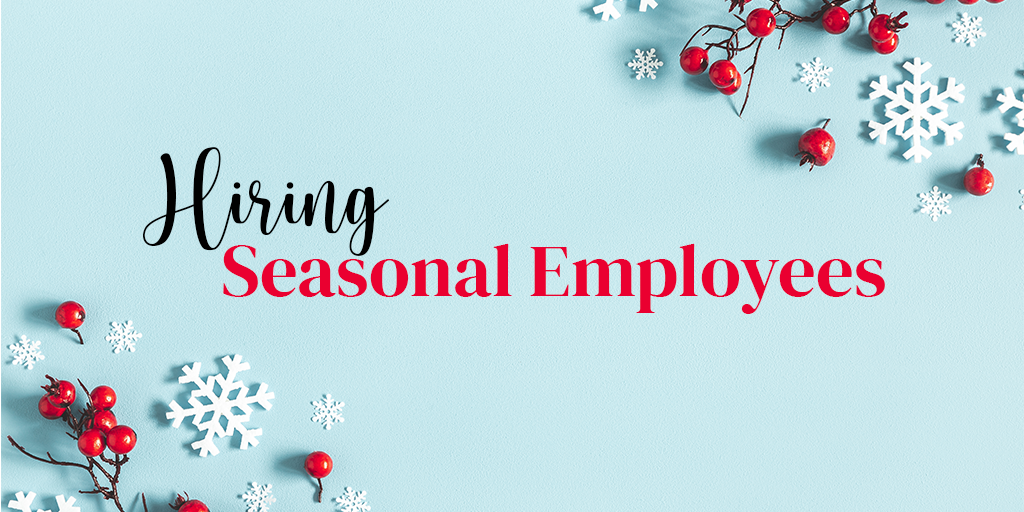Managing a QSR isn't easy - in fact, it is extremely challenging, and it takes an incredible amount of time and effort to keep everything together.
You may have encountered one or more of the following problems:
- Insufficient applicants, yet a need to hire quickly (and seasonally)
- Inefficient hiring processes
- Difficulties in onboarding and training
- High turnovers
… and on top of it all, ensuring that your hiring processes abide by the new Covid-19 protocols, which are likely here to stay.
We hear your struggles, and are here to help. A strategic hiring process is key and may be the deciding factor that makes or breaks your business. That being said, we've narrowed down a list of tips and tricks that aim to tackle these problems, and (hopefully) make your QSR journey a lot less painful than before.
1. Cast a Wide Net
Challenge: Insufficient applicants, yet a need to hire quickly (and seasonally)
As a hiring manager, especially for QSRs, you may often find yourself struggling to hire quickly (especially during peak periods across the different seasons), and the low applicant numbers aren't helping. Managers end up having to work on the front lines, taking up multiple roles to make up for the lack of manpower, on top of their usual duties.
It is therefore important to first cast a net that is wide enough, to secure a large pool of candidates. How can this be done? You should first ensure that your brand is visible on as many job boards as possible. With Workstream's job board integrations, you can post to 25,000 job boards with a single click instead of copying and pasting job descriptions multiple times. The best part? All applicants can still be viewed within the same dashboard! Furthermore, the smart sponsorship feature utilizes AI to optimize job postings, putting your brand in front of 10x as many job seekers.
Additionally, it is key to make your job convenient for applicants to apply. This will automatically increase the applicant pool, as people are often hesitant to apply when too many processes or steps are involved. Perhaps consider using text-to-apply posters, where custom posters can be printed out and displayed in multiple outlets. Visitors will only need to scan the QR code, or text the number displayed, to get a link to all open positions, kickstarting their application process.
2. Embrace Technology and Automate your Hiring Process
Challenge: Inefficient hiring processes
You now have a number of new applicants. What next?
Sometimes, the number of applicants start to get overwhelming, and hiring managers find themselves flooded with resumes. Not only is it time consuming to look through every single resume, you may also start losing track of the status of each application.
This is where an automated hiring process comes in handy.
By investing in a robust hiring platform, you will then be able to gain access to technology-driven hiring systems that make the hiring process easier and a lot more efficient.
Firstly, a streamlined feed ensures that all of your applicants and currently employees are within the same dashboard and mobile application. From new applicants, to referrals and even existing employees, keep track of all your staff and hiring processes with ease. The workflows of job postings can also be customized, allowing you to determine the stages and whether candidates can automatically move on to the next stage. Easily review and recommend candidates, while adding on interview and training notes for ease of reference.
Next comes the screening process. You may request for candidates to send in video resumes, a quick video introducing themselves, which allow hiring managers to easily determine who is genuinely interested in a particular position, instead of reading through endless resumes.
Automated scheduling further reduces the time spent in the hiring process, as candidates that make it to the next stage instantly get a text message link to the hiring manager's Workstream calendar, which can be integrated to their own Google or Outlook calendar, to schedule a meeting based on their availability. No more back-and-forth calls and emails! Reminders are also sent to reduce ghosting - and candidates can even reschedule their interviews, should they be unavailable at the last minute.
3. Work Smart
Challenge: High Turnovers
When you've secured a new hire, the last thing you want is for them to quit the job after a couple of days, which effectively restarts the painful hiring cycle all over again. Sadly, the QSR industry is known for its high turnover rates, and it is inevitable. But this doesn't mean you can't do anything to minimize it!
Prevention is better than cure, and working smart, quite literally, means utilizing smart screening to ensure that you hire candidates that are the best fit for your team. By setting up multiple choice questions and automating scoring, you will be able to weed out candidates who may not be suitable, such as those looking for a short stint, or with limited working experience in the QSR industry. Only qualified candidates will move forward to the interview.
Thereafter, data-driven analytics will also allow you to track retention rates by applicant source. Effectively identify opportunities to reduce spend, while recognizing the platforms that provide long term hires.
It is also crucial that you create a fun working environment, such that all staff are motivated and enjoy what they do. Look into cross-training employees for multiple roles, as it reduces job boredom, while at the same time leaves room for reallocation of employees in the event that someone calls in sick for work at the last minute. Be organized and respect your employees' time, by posting shift schedules ahead of time, and reducing the instances of sudden changes. Recognize the efforts of your employees, through awards and incentives - such as 'staff of the month', while also rewarding them with things they actually want.
4. Optimize your Onboarding
Challenge: Complicated (physical) onboarding and training
With many new hires and onboarding documents across different locations, it may be difficult to consolidate the various materials required for onboarding and training. Having physical onboarding materials also means a higher possibility of losing important documentation.
To make things simpler, why not consider mobile onboarding and training? Hire in seconds through easily accessible onboarding, with pre-made templates and documents that can be authorized with e-signatures, and uploaded conveniently. Furthermore, trigger alerts will be sent to signal incomplete paperwork, which means no more worrying over missing personal information when the time comes.
Additionally, you can easily authenticate a candidate's eligibility, through background check vendors, e-signature services and payroll platforms, which help in optimizing efficiency. With mobile training, send all training resources (such as handbooks, checklists and training videos) through a text message link to all employees. This link is accessible anytime, anywhere - and the HR team will also be able to instantly review completion rates, with SMS reminders sent out to guarantee completion.
5. Stay Safe while Striving Towards the New Normal
Challenge: Ensuring that hiring processes abide by the new Covid-19 protocols
The good news is that this isn't even an additional step, as all processes mentioned above are fully online! However, there are a few additional measures you can take, to be extra safe.
Instead of holding physical interviews, schedule video interviews with potential candidates. Automatically set virtual interviews into your hiring stages, without the need for manual edits. We understand that this may not be easy, considering that it is a service-intensive job after all, and many physical cues are missing in video interviews. However, you may consider leaving the physical interview to the last stage of the hiring process, to minimize physical contact, while still being able to meet the candidate at least once.
Workstream also makes it easy for mobile training to take place - conveniently send training videos, slides and quizzes that can be accessed by applicants anytime via their smartphones. Remote onboarding is also an effective solution, without having to manage countless paperwork from physical onboarding documentation.
Although it may be an arduous journey managing your own QSR, your time and effort will pay off and we hope that these 5 tips have also helped in simplifying the process of re-evaluation.
Schedule a chat now for additional hiring tips personalized for your business, Workstream is always more than happy to help!






